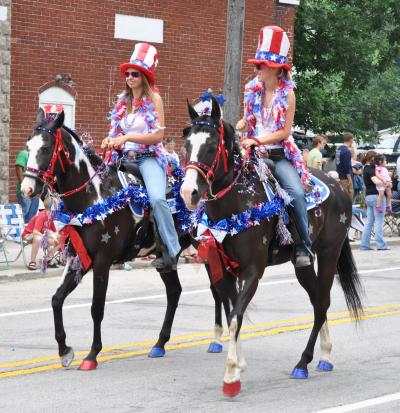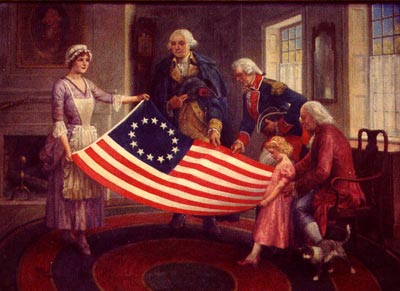Here are some Independence Day fun facts, history and trivia. On July the 4th, 1776, the Declaration of Independence was approved by the Continental Congress. Thereafter, the 13 colonies embarked on the road to freedom as a sovereign nation. This most American of holidays is traditionally celebrated with parades, fireworks and backyard barbecues across the country.

4th of July History & Trivia -Did You Know…
- The major objection to being ruled by Britain was taxation without representation. The colonists had no say in the decisions of English Parliament.
- In May, 1776, after nearly a year of trying to resolve their differences with England, the colonies sent delegates to the Second Continental Congress. Finally, in June, admitting that their efforts were hopeless; a committee was formed to compose the formal Declaration of Independence. Headed by Thomas Jefferson, the committee also included John Adams, Benjamin Franklin, Philip Livingston and Roger Sherman. On June 28, 1776, Thomas Jefferson presented the first draft of the declaration to Congress.
- Betsy Ross, according to legend, sewed the first American flag in May or June 1776, as commissioned by the Congressional Committee.
- Independence Day was first celebrated in Philadelphia on July 8, 1776.
- The Liberty Bell sounded from the tower of Independence Hall on July 8, 1776, summoning citizens to gather for the first public reading of the Declaration of Independence by Colonel John Nixon.
- June 14, 1777, the Continental Congress, looking to promote national pride and unity, adopted the national flag. “Resolved: that the flag of the United States be thirteen stripes, alternate red and white; that the union be thirteen stars, white in a blue field, representing a new constellation.”
- The word ‘patriotism’ comes from the Latin patria, which means ‘homeland’ or ‘fatherland.’
- The first public Fourth of July event at the White House occurred in 1804.
- Before cars ruled the roadway, the Fourth of July was traditionally the most miserable day of the year for horses, tormented by all the noise and by the boys and girls who threw firecrackers at them.

- The first Independence Day celebration west of the Mississippi occurred at Independence Creek and was celebrated by Lewis and Clark in 1805.
- On June 24, 1826, Thomas Jefferson sent a letter to Roger C. Weightman, declining an invitation to come to Washington, D.C., to help celebrate the 50th anniversary of the Declaration of Independence. It was the last letter that Jefferson, who was gravely ill, ever wrote.
- Both Thomas Jefferson and John Adams died on Independence Day, July 4, 1826.
- The 56 signers of the Declaration of Independence did not sign at the same time, nor did they sign on July 4, 1776. The official event occurred on August 2, 1776, when 50 men signed it.

- The names of the signers of the Declaration of Independence were withheld from the public for more than six months to protect the signers. If independence had not been achieved, the treasonable act of the signers would have, by law, resulted in their deaths.

- Thomas McKean was the last to sign in January, 1777.
- The origin of Uncle Sam probably began in 1812, when Samuel Wilson was a meat packer who provided meat to the US Army. The meat shipments were stamped with the initials, U.S. Someone joked that the initials stood for “Uncle Sam”. This joke eventually led to the idea of Uncle Sam symbolizing the United States government.

- In 1941, Congress declared 4th of July a federal legal holiday. It is one of the few federal holidays that have not been moved to the nearest Friday or Monday.

Read more on the Declaration of Independence.
Independence Day Trivia & Facts – An Inspired America:
- Thirty places nationwide with “liberty” in their name. Liberty, Missouri (26,232) boasts the highest population of the 30 at 26,232. Iowa has more of these places than any other state at four: Libertyville, New Liberty, North Liberty and West Liberty.
- Eleven places have “independence” in their name. The most populous of these is Independence, Missouri, with 113,288 residents.
- Five places adopted the name “freedom.” Freedom, California, with 6,000 residents, has the largest population among these.
- There is one place named “patriot” — Patriot, Indiana, with a population of 202.
- And what could be more fitting than spending the day in a place called “America”? There are five such places in the country, with the most populous being American Fork, Utah, with 21,941 residents. Check out American Fact Finder.
–The Declaration of Independence 4 of July, 1776.











